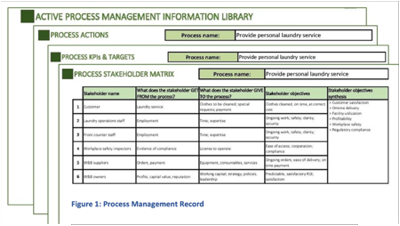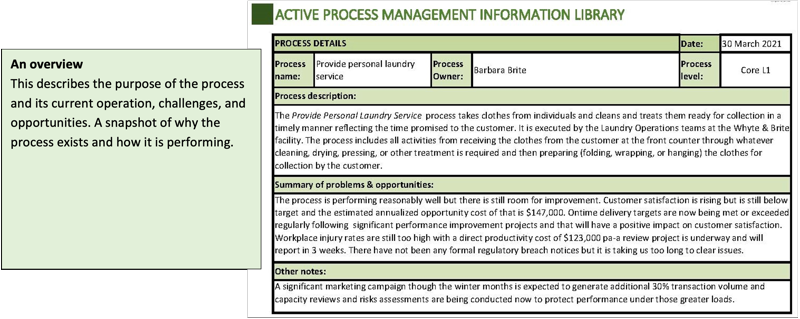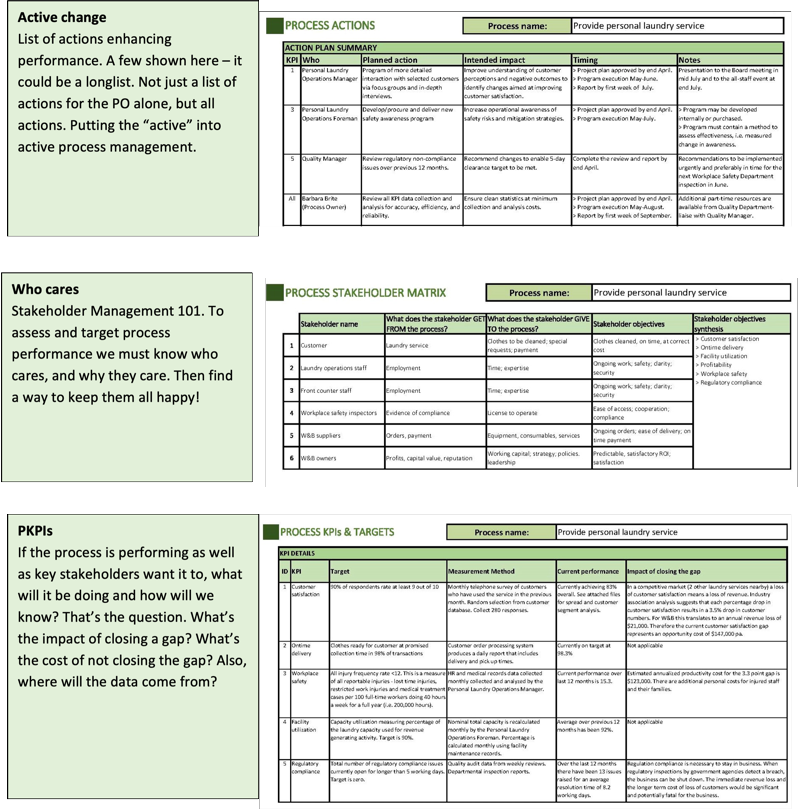Continuous Learning
In a recently published article in Harvard Business Review[1], Professor Willy Shih reminds us of something very important that we too often overlook about the much-lauded and often-abused Toyota Production System (TPS). He notes that the TPS is "a system designed for learning. This focus on learning and continuous improvement occurs at multiple levels."
Learning AND continuous improvement. A matched pair. In that order. Repeat continually.
Our common reaction to coming across pearls of wisdom such as this TPS insight is "Well, duh! Of course!" Many of the best ideas appear obvious once someone has described them. "Gravity? Sure, Newt, we all knew that. Stuff falls down."
So, we move on and get back to something important? Not so fast!
What if we were determined to really do continuous process learning in a practical way? What would that mean? What would be the impact? What can we learn from this nuance of the TPS mindset?
The purpose of process is performance
Before we start continuously learning, let's be crystal clear about why it matters. Why bother? What's the problem we are trying to solve?
Put simply, the purpose of process is performance.
All of our process work must be aimed at enhancing organization performance. Else, it is, by our own process definitions, waste.
In a previous column[2], I wrote about the prime process imperative to deliver proven, valued, business benefits (PVBB), i.e., benefits to the business, valued by the business, and proven with objective data about which there is no dispute.
This sets a high bar, but it is the only level of outcome that can be accepted.
Proven. Show me the data. If there is no evidence, the improvement didn't happen. Don't ask for an act of faith; show me the objective evidence of performance improvement.
Valued. Delivered benefits must be genuinely valued by the business. If someone outside the BPM team didn't get excited about the delivered benefit, then it's not much of a benefit.
Business. Valued performance improvements must relate unambiguously to the enhanced achievement of an important strategic or operational objective.
Benefits. Keep it real. A process improvement must be a solution to a current business problem, an avoidance of an emerging problem, or the fulfilment of a real opportunity.
Proven. Valued. Business. Benefits.
This is the first lesson!
Process body of knowledge
If we are to continuously learn about a process, what would we like to know? What knowledge about a process should we deepen and enrich over time? What is it we need to know to enable better decisions and more effective management and improvement of the process-in-focus.
The short version of the list is 'easy':
- Everything.
The practical list is quite a bit longer:
- Why does the process exist? What is it meant to do?
- Who are the process performance stakeholders? Who cares? What is their current level of satisfaction?
- Four key performance questions — how does it perform, how should it perform, how could it perform, how will it perform?
- Wiggle, wobble, & well (WWGLL, WWBLL, & WWELL).[3] What would good look like? What would bad look like? What would exceptional look like?
- What is changing in the process context that might impact performance?
- What risks, if realized, would impact process performance?
- What new ideas or innovations might be applied to the process, with a positive cost-benefit, to enhance performance?
- What has been learned from previous process improvement projects?
- What change projects are underway, for this and other processes, that might impact on the process?
You will identify extra specific process knowledge targets for processes you know well.
If you are now thinking, Roger, that's a lot of information and a lot of processes! Surely too much! I would agree, if we were trying to actively manage all our processes.
That would not be possible. The good news is, neither is it necessary.
We only need to actively manage our high-impact processes (HIPs) which might number just 20–30. I've written a previous column about HIPs and the Process Priority Pyramid here.[4]
Continuous process learning
So, how does this work? How can we do continuous process learning in the real world?
 There is a body of knowledge to create and maintain for any process that we want to actively manage. I describe below what I think is in the basic knowledge set, but first some important general points.
There is a body of knowledge to create and maintain for any process that we want to actively manage. I describe below what I think is in the basic knowledge set, but first some important general points.
Compelling reason
It might seem obvious, but if this is going to be useful and sustained, key people must really want it done. The physical effort required is reasonably small, but the mindset change is (usually) huge. There must be an agreed compelling reason and shared understanding.
Nobody's job
Active management of a cross-functional process is, traditionally, nobody's role. We need to correct this horizontal vision problem with a corrective lens of effective process governance.[5]
Process management is a team sport! (Thanks, Andrew Spanyi[6]). It's not the job of just Process Owners or the Office of BPM; it's everyone's job including the managers in charge of executing the process. If process management is an SEP[7], nothing gets done.
Bring data
Every time a process executes, it generates performance data that might be analyzed. That can be a lot of data or a very sparse data set … a firehose of data or a drought. In either case — and hopefully we are somewhere away from those extremes — we must have performance data. Without data we are guessing.
Active process management
I've used the phrase active process management a few times. Let's be clear what that means. It does not mean passively collecting some data and putting it in a spreadsheet.
It means carefully defining process KPIs (PKPIs) and their targets, collecting that performance data, reviewing it with all stakeholders involved in process execution, searching for new ideas for process execution, discovering performance opportunities and problems, improving performance, finding out why performance didn't change as expected, and keeping well informed about what is happening in the ecosystem of the process.
And repeat. Continually. Whew!
Remember that we are doing this only for our HIPs (high-impact processes), so for 30 processes not 300. And when starting out on the active process management journey I suggest you commence with just 3 and learn how to make it work best in your environment.
The Process Management Record
Let's get practical.
The Process Management Record (PMR) is what I call the body of knowledge that I expect a Process Owner (with others) to maintain. Each Process Owner might tailor this information to suit their purposes, but I think this is the minimum dataset.
The tables below provide an example of the PMR content.

You might maintain this information in your modelling tool. For simplicity, I have it in an Excel spreadsheet. If you'd like a copy of that file, email me (roger@tregearbpm.com) and I'll be happy to make it available.

Related learning
Before you go, there are a few more things we need to learn about — the methods and tools we use to document, analyze, and improve our processes. We need to understand how to use our modeling, simulation, and mining tools of choice, and all the other IT magic. Add in the many analysis methods which can be used to create insights from performance data.
Perpetual improvement
We've all got a lot to learn! Active continuous learning about the context and performance of a process enables deeper and more effective process management. Knowledge is power. The power of genuinely continuous process improvement.
References
[1] W, C. Shih, "What Really Makes Toyota's Production System Resilient," Harvard Business Review, (November 15, 2022),
URL: https://hbr.org/2022/11/what-really-makes-toyotas-production-system-resilient Accessed 25 November 2022.
[2] "Proven Valued Business Benefits," Business Rules Journal, Vol. 22, No. 7, (Jul. 2021),
URL: http://www.brcommunity.com/a2021/c072.html
[3] "Wiggle, Wobble, and Well," Business Rules Journal, Vol. 23, No. 01, (Jan. 2022),
URL: http://www.brcommunity.com/a2022/c086.html
[4] "Process Priority Pyramid," Business Rules Journal, Vol. 22, No. 5, (May 2021),
URL: http://www.brcommunity.com/a2021/c068.html
[5] "Who's in Charge?" Business Rules Journal, Vol. 22, No. 11, (Nov. 2021),
URL: http://www.brcommunity.com/a2021/c082.html
[6] Andrew Spanyl, Business Process Management (BPM) is a Team Sport: Play it to Win! (June 1, 2003),
URL: https://www.amazon.com/Business-Process-Management-Team-Sport/dp/0929652029/ref=sr_1_1
[7] SEP — Someone Else's Problem
# # #
About our Contributor:
Online Interactive Training Series
In response to a great many requests, Business Rule Solutions now offers at-a-distance learning options. No travel, no backlogs, no hassles. Same great instructors, but with schedules, content and pricing designed to meet the special needs of busy professionals.











How to Define Business Terms in Plain English: A Primer
How to Use DecisionSpeak™ and Question Charts (Q-Charts™)
Decision Tables - A Primer: How to Use TableSpeak™
Tabulation of Lists in RuleSpeak®: A Primer - Using "The Following" Clause
Business Agility Manifesto
Business Rules Manifesto
Business Motivation Model
Decision Vocabulary
[Download]
[Download]
Semantics of Business Vocabulary and Business Rules